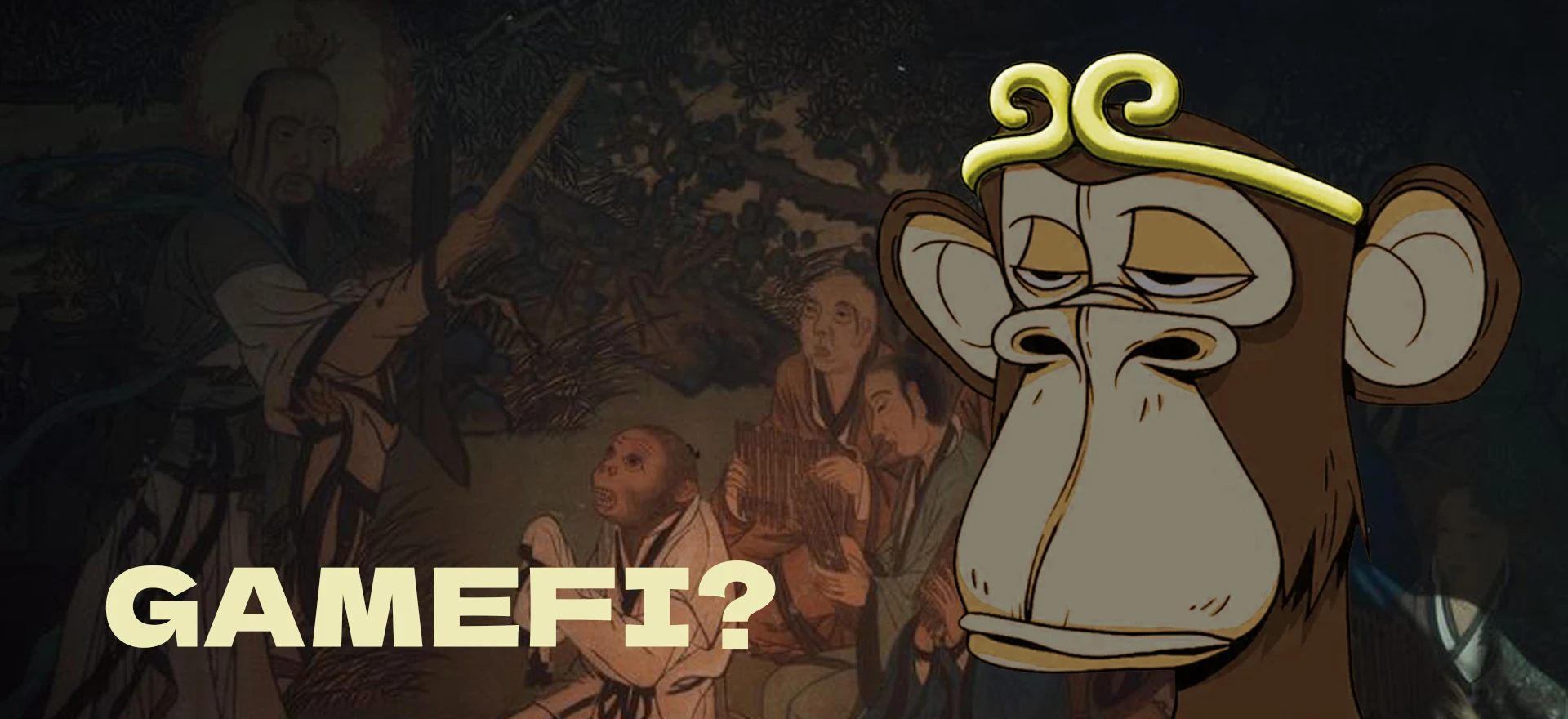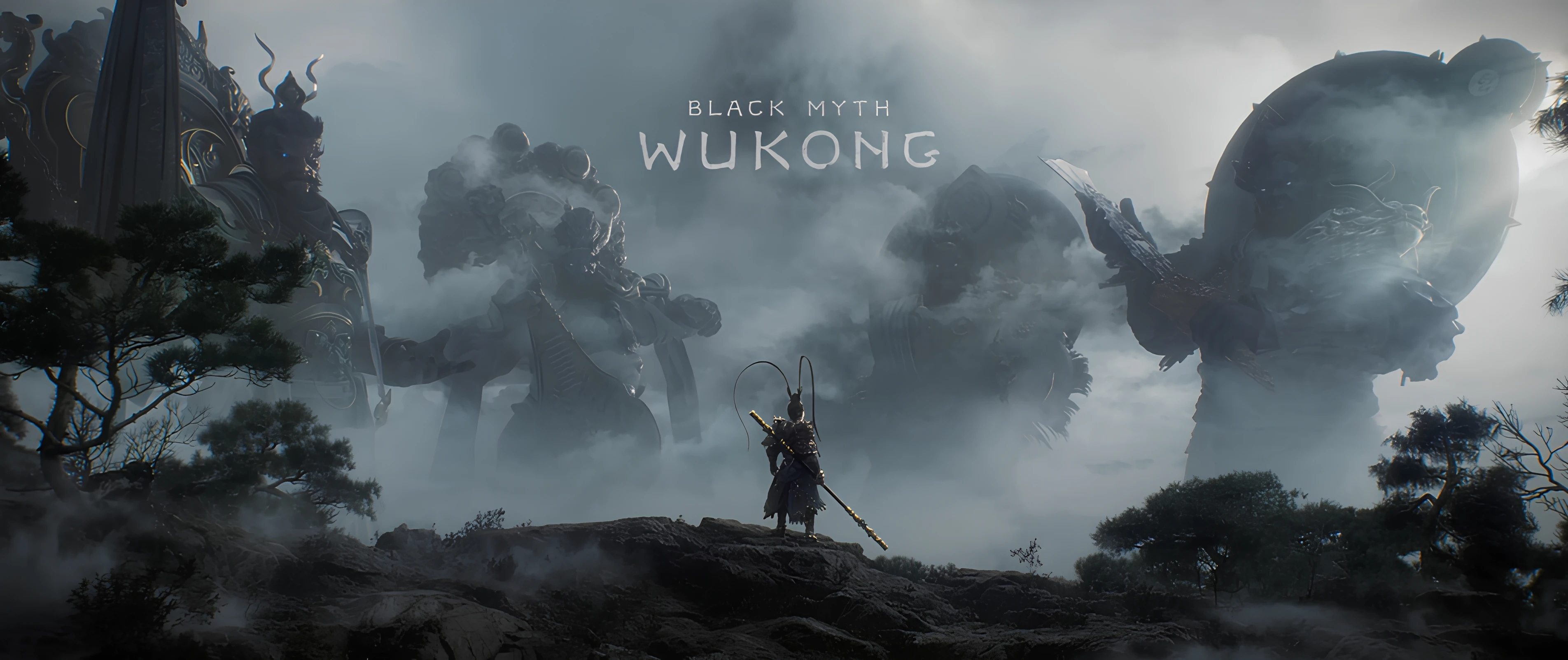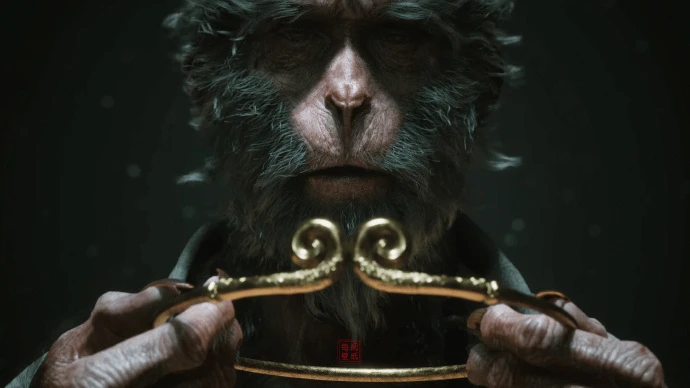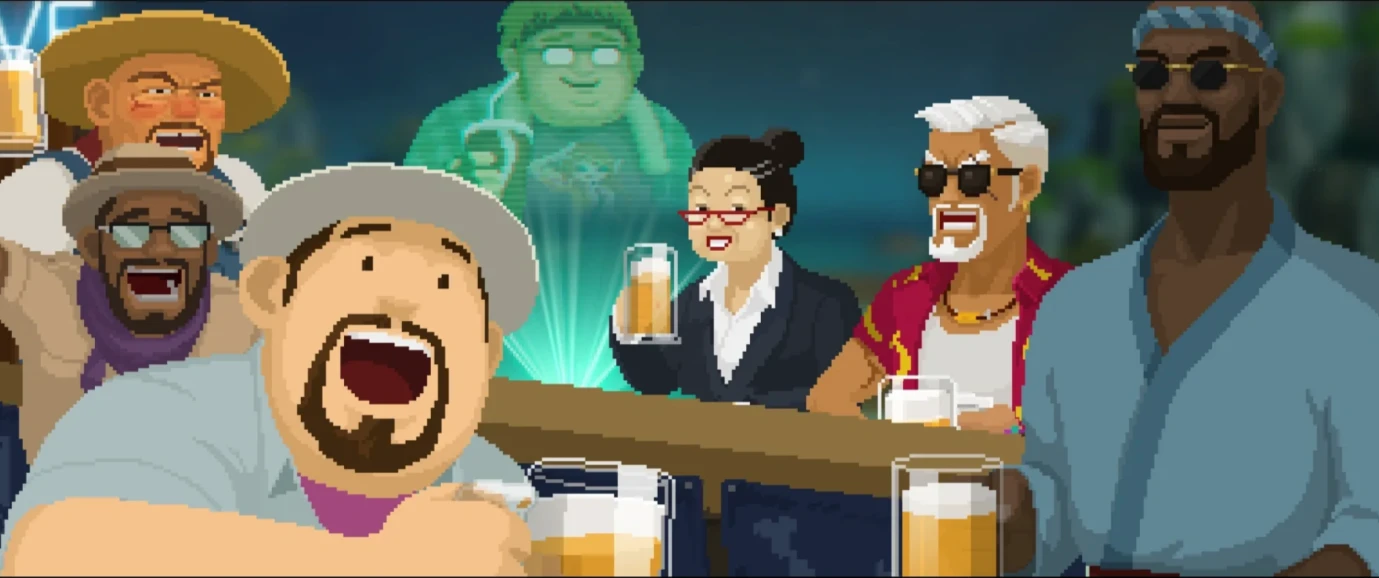Author: YBB Capital Researcher Zeke

Preface
This article is some casual chat during market garbage time, and it requires a certain understanding of the traditional game market. You can treat this article as a diary or a contemplation. These are just some of my superficial thoughts on GameFi and my views on the future of this track after playing "Black Myth: Wukong".
I. The Nine-Nine-Eighty-One Difficulties of Game Science

Three days of total online sales exceeding tens of millions, peak simultaneous online players on Steam exceeding 2.35 million, multiple brand collaborations selling well, national-level media interviews multiple times, and multiple game scenes allowing free entry for life based on game clearance records, with over 4 million views on the 1986 version of "Journey to the West" on YouTube. The above are several related news since the launch of "Black Myth: Wukong". If you don't play single-player games, it may be difficult to understand the meaning of some of these related data in these news. To give a simpler example: in terms of sales and player online data within seven days, this game is roughly equivalent to the Chinese national football team reaching the top four in the World Cup, and there is still room for improvement.
Indeed, this kind of success is also due to various factors outside the game. However, ultimately, it cannot be separated from the game itself being of high quality. In my personal experience, although "Black Myth: Wukong" is not absolutely perfect, in the environment of domestic AAA games, it is definitely unprecedented, and its level is enough to compete with the ARPG games of the world's leading game companies. Therefore, after playing, what remains is more of a sigh and reflection. The difficulties and obstacles experienced by game science are far more than those faced by game developers in our circle. But why has there not been a breakthrough in GameFi since the end of the P2E era?
To understand this, perhaps I can start with my memories of game science. In the summer of 2013, the most popular games in the internet cafes were "League of Legends" and "CrossFire". As a frequent visitor to the internet cafes near my school, the most common sound I heard every day was "Welcome to Summoner's Rift" and "Fire In The Hole". Interestingly, one day I faintly heard some sounds of sticks and swords mixed with ancient-style background music among these familiar sounds. I asked them what game they were playing, and they asked me in return, "You don't know? It's 'Dungeon & Fighter'!"
At that time, this game was definitely outstanding among MMORPG games, and the situation at that time still leaves a deep impression on me. After all, in a black internet cafe that only had a peak operating period of two hours during school lunch break, it was rare to see nearly a quarter of the people playing such a game full of various storylines. However, this trend came and went quickly. Several months later, I rarely heard those striking sounds again. I also asked some of them why they no longer played "Dungeon & Fighter", and the replies I received were basically the same: it's not fun anymore, and it's too expensive to top up. Later, no one mentioned this game again.
Six or seven years later, a monkey that had turned into a golden cicada flew into the Black Wind Mountain with the voice of an elder, announcing that the era of domestic single-player games was about to change. I began to be curious about which major company was challenging such a difficult and thankless task, and the result was shocking: game science? A studio of about 30 people? It should be noted that for games of the same level, there are over 3000 people (such as "Red Dead Redemption 2"), and the most ambitious Japanese single-player studio, such as the developer FS of "Elden Ring", also has a scale of nearly 200-300 people, and most of them have more than ten to twenty years of experience in single-player game development. As I delved further, I saw that unfamiliar yet familiar name, the chief planner of "Dungeon & Fighter", Feng Ji. After learning the story behind this producer, I suddenly understood how much resentment was contained in the last sentence of the first promotional video for "Black Myth: Wukong", "After the white bones, retrace the Journey to the West" (Dungeon & Fighter began to decline after the third chapter, the White Bone arc).
In 2009, online games were basically dominated by RPGs. "World of Warcraft", "Zhengtu", "Legend", "Fantasy Westward Journey", "Hot Blooded Jianghu" were all regulars in internet cafes at that time, and the internet-addicted youths of the 80s and 90s basically grew up with these familiar IPs. As the game type with the strongest ability to attract money, Tencent, which is now thriving, was unable to get a piece of the pie at that time, so the AGE engine was urgently brought out. So who was going to make the game? Feng Ji, who was less than 30 years old at the time, was entrusted with this heavy responsibility as the chief planner of the game. The start of "Dungeon & Fighter" was invincible. The CG produced by Tencent at great expense combined with meticulously crafted game levels made this game an instant hit. However, Feng Ji and the production team made what I consider to be a fatal mistake. Instead of making a game that was more like an MMORPG, they focused too much on quality. With only three chapters of content, it was too little, and too much time was spent on polishing, and it was not commercialized enough. Feng Ji understood games, but he did not understand capital. "Dungeon & Fighter" was well-received but not commercially successful. After all the content was exhausted, in order to maintain daily active players and meet Tencent's KPI requirements, a large amount of repetitive gameplay from Korean-style games (running maps, sects, repetitive dungeons) was added to the game. Unfortunately, this move not only did not extend the life of the game, but also caused a catastrophic collapse in word of mouth. The final outcome of "Dungeon & Fighter" was that Tencent changed the operation team, and after implanting a large number of pay-to-win systems in the game that affected the game's balance, it died amidst a chorus of player complaints. At that time, there was a very classic saying among players, which corresponds to the end of the previous paragraph, "After the white bones, there is no more Journey to the West".
After this, Feng Ji made a self-deprecating short film and left with a few core members and the art planner Yang Qi. In short, the story of making "Dungeon & Fighter" is about a group of young people with dreams of making games being hit hard by reality. However, the subsequent story is very successful, and everyone knows it. I won't go into too much detail here, but after the release of "Dungeon & Fighter", these "young people" finally succeeded in achieving true scripture (it took Tang Seng 14 years to obtain the true scripture in "Journey to the West").
II. The Extreme Pursuit of Certain Things, Isn't It Also a Kind of Golden Hoop

Shame leads to courage, which is a spirit that is extremely lacking in our circle. We always feel that the lack of success in GameFi is due to imperfect economics, the wrong form of the game, or the complexity of the blockchain and the high barriers to entry. We are particularly obsessed with things outside the game, but few people pay attention to the game itself.
2.1 The premise of financialization is that players are willing to pay the bill

I have always considered myself to be someone who understands games. I started playing Game Boy at the age of seven, from the 2D era of black and white "Pokemon", "Kirby", "Zelda". Then, with the rise of esports games, and now the twilight era of game consoles, I have always been a part of it. I have played almost all the games with a slightly high popularity, and the vast majority of them were quite enjoyable. However, even so, I rarely bring up GameFi on my own. I have always felt that my understanding of GameFi is inferior to any other track of Web3. GameFi is a product that makes me feel inexplicable. As an investor, I receive at least three or four GameFi project decks (business plans) every month, and eighty to ninety percent of the content in most decks is about economics, token distribution, how large the game industry is, what guarantees blockchain technology can provide, and there is very little about the game, and some don't even have a demo.
They give me the feeling that they seem to understand finance, but not games. The essence of game success is very simple: it needs to be fun. Over-financialization is actually a behavior that goes against players and project parties (assuming the game is made seriously). You might argue with me about how brilliant blockchain games in the P2E era were, but in my opinion, that was the victory of a side branch, not the victory of GameFi. Many people in the industry have cheered for blockchain games like "Stepn" and "Farmer's World", where the entry-level NFTs easily cost five or even six figures in Chinese yuan. But this actually isolates the real game users. In over 95% of online games, even those with prepaid cards, the entry threshold is free. Traditional players are not lacking in payment ability, but they will only pay for emotions, passion, and a sense of achievement. The consumption of items like the Dragon Lore in "CSGO", the Dragonblade in "League of Legends", the early cape in "PUBG", and the Spectral Tiger in "World of Warcraft" is equally expensive, but it doesn't change any attributes of the player's character in the game, and some of them cannot even be resold. In this era, the commercial logic of top games has always been simple: if you can make players happy and release dopamine, they will crazily pay for it, and most of them don't even need economics. However, once the game introduces Tokens and NFTs that affect balance, it actually becomes very complicated. Let's start with the simplest. For example, if a project wants to develop a large-scale blockchain game, they have to take care of both Tokens and NFTs, which forces the game to be frequently updated and improved. We just talked about the value issue of the former, where high prices will deter new players, and a price collapse will lead to community collapse. Tokens and NFTs also conflict with the latter. Game development is much more expensive than we imagine, and after burning through early-stage financing, Tokens and NFTs will become the only economic support for subsequent version updates. Selling Tokens is equivalent to leading the community into a death spiral, or abandoning the original intention and leaving. Another option is to create a bunch of new NFTs and then sell them, but the motivation to attract players to buy can only be rarer, more profitable, and more powerful NFTs than the early ones. So, is this kind of disguised issuance a slap in the face to early NFT buyers or even a Web2.5 model? Even if you survive the development period of the new version, how will you make up for the huge pit created by these NFTs? In the end, falling into ruin is inevitable, and the end of "Dungeon & Fighter" is a microcosm of this situation.
So, GameFi gives me the feeling of being more like different types of mines, each with different rules, but fundamentally it's about buying a shovel, going to work in the mine every day, and digging until the mine collapses. Even now, this situation is everywhere. Speaking of this, let's talk about something a little more complicated. Discussions in the industry about GameFi are still keen on "mine rules", and recently there has been discussion about ServerFi, but it feels to me like everyone thinks that having ServerFi is like finding some kind of "mine rule" that can keep the mine balanced forever. After entering the 3A era, GameFi has indeed become more rich in elements and more playable, and the economic design of large-scale blockchain games can indeed be more complex. I also tried to understand the so-called game economics in 2023, but in fact, any kind of economics needs the support of a player base (without a player base, it is impossible to generate revenue out of thin air, and economic design can only constrain different participating roles), otherwise it will evolve into a game between players and project parties. Introducing complex economics may not necessarily make the game more fun. In most cases, it is the beginning of ruin. If you have a certain understanding of traditional MMORPGs, it should not be difficult to understand that finding a balance between the faucet and the sink is a very difficult task, and doing complex game economic design is not easier than governing a small country. After reviewing a large number of MMORPGs about game economic design, I actually only found one successful example that has been maintained for many years— "Fantasy Westward Journey". However, the complexity of its game elements and design, with a player registration number exceeding 100 million (close to the total population of Japan), is something that GameFi cannot learn, and even Web2 does not have many successful replicators. The world of coins is a utilitarian world, where as long as it can make money, all the rules, designs, and loopholes in the game will be repeatedly studied, and ruin is often just a thought away. Maintaining balance can only be achieved by constantly updating the rules, and this behavior of constantly changing the rules is a slap in the face to decentralization. "Mine rules" have never been the most important, and blockchain gives games a simple meaning: to make ownership of digital assets and economic systems fairer and more transparent, and to bring opportunities to game developers from the bottom up. But blockchain cannot change the essence of things, and it should not reverse the order of everything.
2.2 3A Games
After P2E, GameFi is basically divided into two directions: 3A-level blockchain games with playability as the entry point, and On Chain Games with fairness and compliance with the spirit of the Autonomous World as the entry point. Let's start with the former. Although I also look forward to a breakthrough 3A game in GameFi, 3A may not be suitable for this circle. I say this not to completely deny this type of game. I believe there will be successful 3A masterpieces in the future of GameFi, but currently, it is difficult to do so without breaking out of the circle. From a business perspective, 3A games are a very mediocre game type in Web2, and even more so in Web3.
We first need to understand the definition of 3A: a lot of money, a lot of resources, and a lot of time. As for how much is a lot, there has never been an accurate definition. According to my standards, these projects represent the highest standards of the industry, and a single failure could possibly lead to the destruction of a world-leading game company. Blockchain is bottom-up, and fundamentally, these two are very incompatible. However, the current development path of GameFi has an inexplicable obsession with 3A. 3A means making grand, beautiful graphics, but it does not directly mean it's fun. In the blockchain world, 3A blockchain games raise funds through presale NFTs, which is basically a default behavior, but the game at this time basically doesn't even have a half-finished product, and the future is all based on gambling and imagination. The ones who pay the price for failure are not the project parties, but thousands of retail investors and VCs. For a game with a development cost of over 100 million, to form a virtuous cycle, it needs at least hundreds of thousands of players to enter, according to the conversion rate of normal online game paying players (low conversion rate: less than 1%, medium conversion rate: 1% to 3%, high conversion rate: 3% to 5%). Whether this round of 3A blockchain games can achieve this kind of performance, I think most of you should be able to understand (the number of Web3 players in 2024 has decreased by 6 times compared to 2023, and currently there are less than 1 million). Most of them will fall into some kind of situation as described earlier, becoming a mine and eventually collapsing. In the current situation, the entire commercial logic from top to bottom in the industry is basically impossible to form a closed loop, and making 3A blockchain games is more like raising money from both ends for VCs and retail investors. If someone is really persistent on this path and wants to be the breakthrough, then I hope you won't be blinded by utilitarianism. Games are very concrete entertainment products, and they can never fool real players. I also hope that the story of game science can encourage everyone to achieve true scripture in this impetuous circle.
2.3 On Chain Games
On Chain Games, also known as full-chain games, Autonomous World, pure Web3 blockchain games, and authentic games, is a concept that has been around for a long time, but only became popular last year, although it is rarely mentioned now. From the perspective of decentralization, the path of full-chain games actually has no mistakes. As we mentioned earlier, if Web 2.5 games want to break decentralization, there are various methods, and the purest fairness can only be left to the code. However, from other perspectives, this concept is full of loopholes. For example, is the significance of the playability of the game really less than fairness and permanence? If the rules are completely put on the chain, how can the tokens not collapse if there are loopholes? Every action requires gas and signatures, can it really be called a game? At this stage, full-chain games can only meet the needs of a niche group. Similar to earlier SocialFi, would you use a social platform without content? Although there are many solutions to these issues today, most of them are still not perfect, and the launch of this concept may have to wait for the next round.
III. The wind rises from the end of the green duckweed, and the waves rise from the micro-ripples

Blockchain is not only for running games, and the financialization of games does not necessarily have to be online blockchain games. Outside of Web3, there are actually many game creators from the bottom up. They may be students in college, self-taught enthusiasts, or middle-aged game developers who have just been laid off from big companies. They may not be able to create miracles like "Black Myth: Wukong", but there can be thousands of types, carriers, and gameplay for games, and independent games are often the direction they choose. The amount of funding they lack is actually very small, and blockchain itself is a very good crowdfunding platform. Building an economic system around independent games for this group of people has always been an idea in my mind. The industry is too eager for quick success, but there is still a group of people outside the industry who maintain their passion. If you are interested in this idea, you can watch some documentaries, such as "Alone" by Modian and "More Than Games" by Sennar Film, which is something that is both positive and has the potential to make money.
The specific implementation process may not be so rigorous, and I will briefly explain my thoughts. Although there are many launchpad platforms in the coin circle for games, most of them are still focused on online games, and the crowdfunding methods are mostly through NFT sales. Even if the game is successful in the end, the profits for players are still very limited. Independent single-player games have the advantages of fast production and low cost. Crowdfunding can be done through the release of a demo of some levels, which can also help to build an exclusive community before the game is released. Enthusiasts and stakeholders can contribute their efforts to improve the game details. The crowdfunded NFTs can be divided into multiple categories, such as the lowest-tier NFTs that can buy the future gaming rights, then there can be NFTs that add skins, and more advanced ones can share in the future revenue of the game. The release of crowdfunding funds can be determined by NFT holders through voting. For example, when additional production funds are needed, the previous production progress, related demos, and videos can be released first, and the funds can be released after the community reviews the overall quality. If a game's demo performs well, the prices of corresponding high-level NFTs will also rise. After this logic matures, the platform can also try to launch crowdfunding for larger games. Here's another story to add, the funding for the birth of "Black Myth: Wukong" actually came from independent mobile games led by Feng Ji. The greatest things in blockchain also come from dark corners, and independent games can also be very successful.
IV. Smooth the rough road and start again after the hard fight
Finally, I'd like to share a passage from Feng Ji's thoughts two months before the launch of "Black Myth: Wukong".
"During the development of 'Black Myth: Wukong', most of the decisions I made can be simplified into three words—'give it a try'.
Try the features that others have done flawlessly ten years ago, but we have always struggled to grasp.
Try to chat with everyone excitedly, but the actual quality is embarrassing.
Try to boast in the promotional video with the demo, but the actual performance is poor or the gameplay is quite boring.
Try to invest a lot of time in trial and error due to overconfidence or a sudden impulse, but everything looks beautiful.
The Black Monkey may be too lucky, full of challenges since its debut, and naturally not without regrets.
When I finished writing the script for the first promotional video, I didn't know how to turn this video into a playable level.
When I completed the first level that could be tested internally, I didn't know how much it would cost to turn the entire story into such a level.
Even if there is already a seemingly complete story, I still don't know what it means to make it stable, smooth, compatible with different hardware and software platforms, and available in over a dozen languages, and to release physical versions and CDs.
Not knowing is good.
Since choosing to dance in the wilderness, we should embrace the fear and anxiety brought by uncertainty. Because behind the fear and anxiety, there are surprises that satisfy curiosity and the joy of recognizing oneself.
In this unknown fog, our only guide is to ask ourselves more, and ask everyone on the team, 'Is what we are doing now something that we, as users, can understand, approve, and love?'
The challenges we face now, have others in the world done them before? Even if no one has done it, can we do it?
If the answers to the above are all yes, then of course it's worth a try.
Just like the tenth year of game science, we decided to self-publish for the first time, set the price for the first time, launch on consoles for the first time, produce physical versions for the first time, and promote globally for the first time… all based on such self-questioning and self-answering.
Just give it a try, it won't kill you."
免责声明:本文章仅代表作者个人观点,不代表本平台的立场和观点。本文章仅供信息分享,不构成对任何人的任何投资建议。用户与作者之间的任何争议,与本平台无关。如网页中刊载的文章或图片涉及侵权,请提供相关的权利证明和身份证明发送邮件到support@aicoin.com,本平台相关工作人员将会进行核查。




